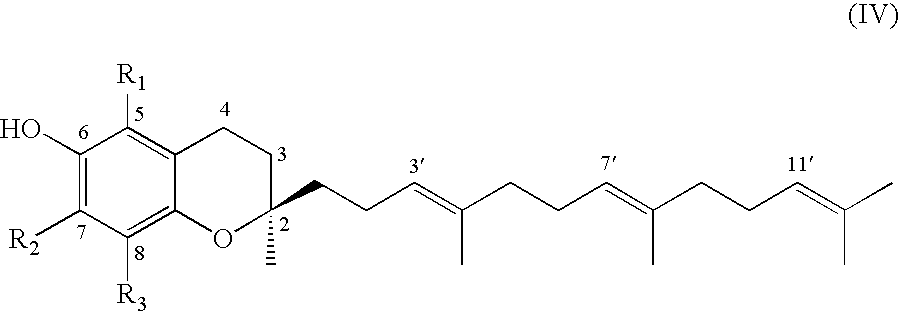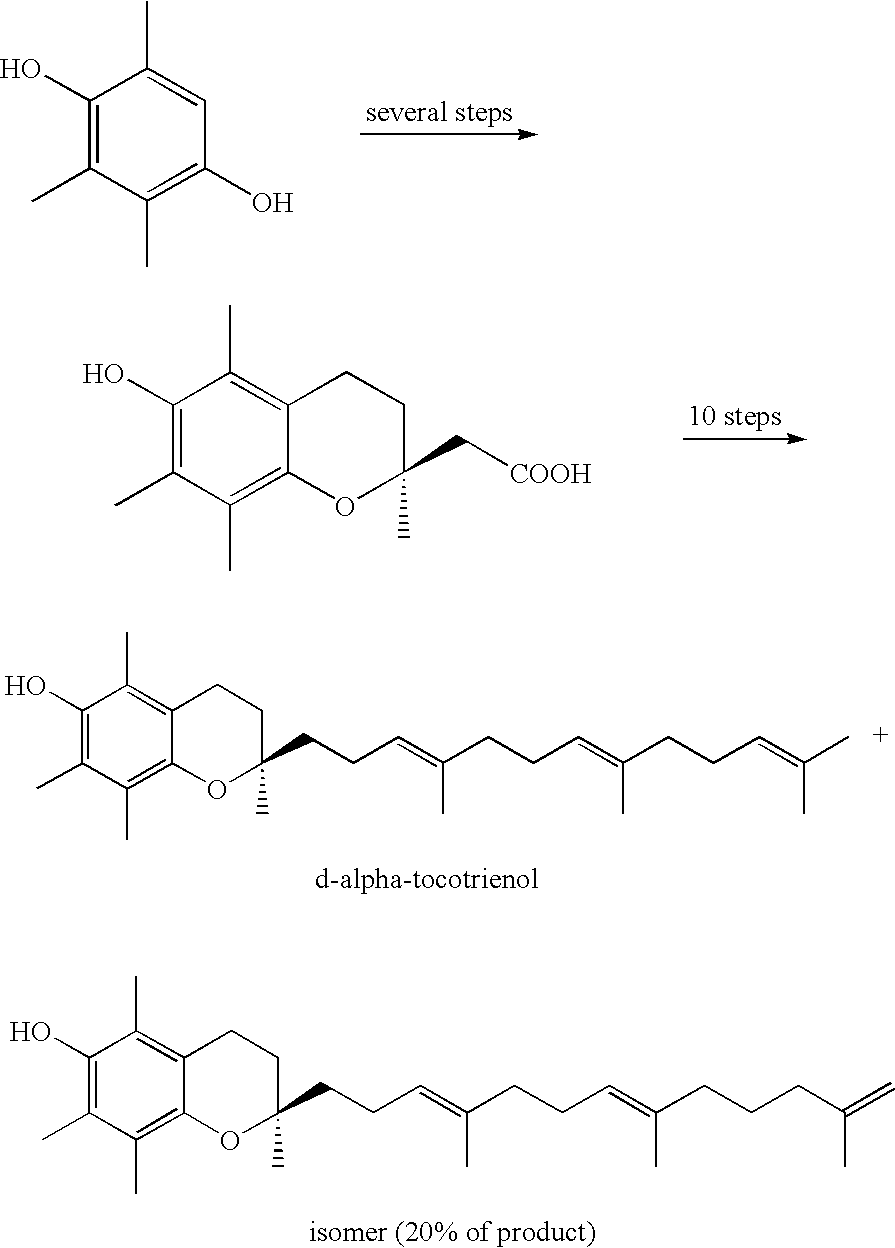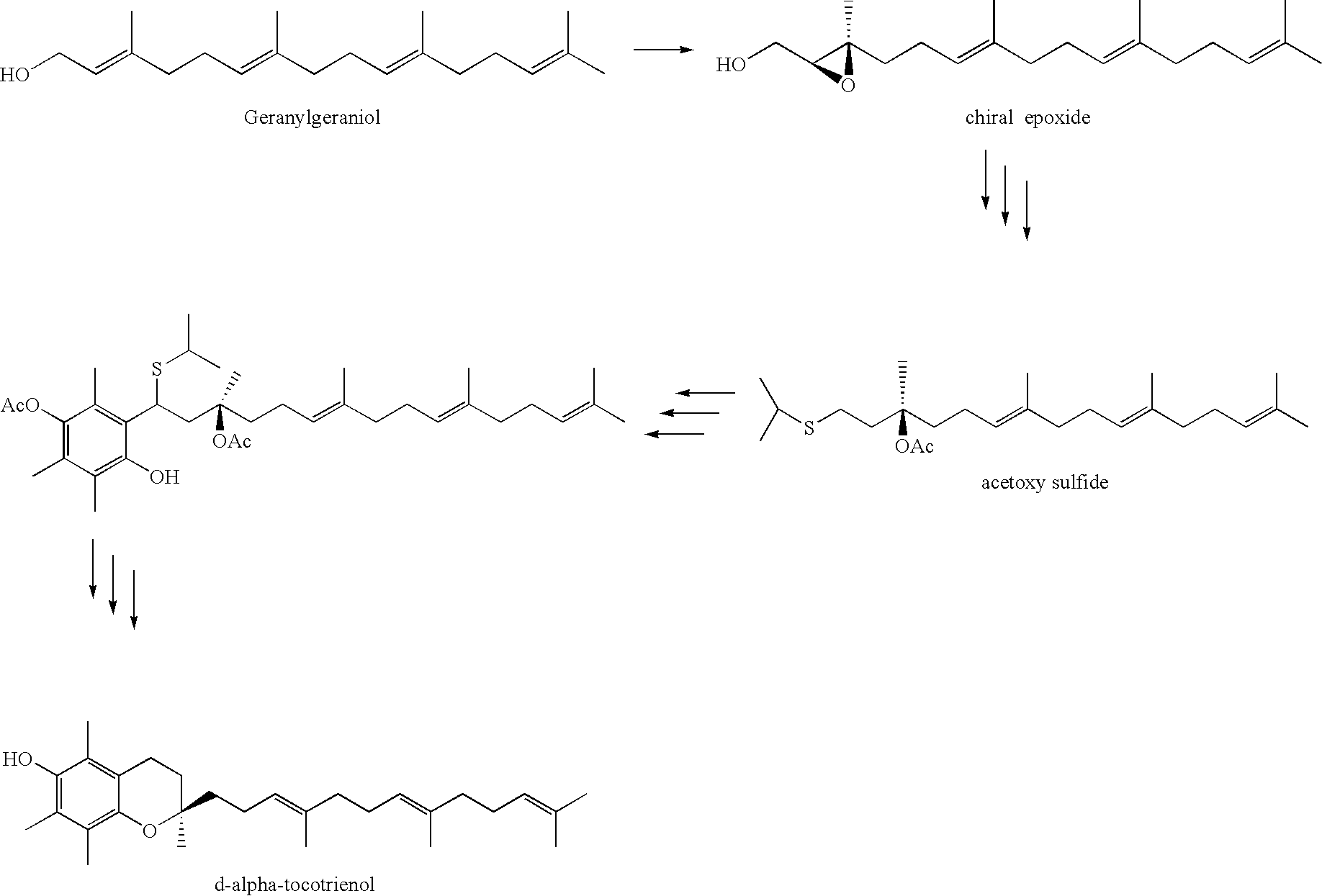Process for synthesizing d-tocotrienols from 2-vinylchromane compound
a technology of dtocotrienols and d-tocotrienols, which is applied in the field of process for synthesizing dtocotrienols from 2vinylchromane compounds, can solve the problems of insufficient supply of requisite plant or seed oils, unable to meet the requirements of dietary fibers,
- Summary
- Abstract
- Description
- Claims
- Application Information
AI Technical Summary
Benefits of technology
Problems solved by technology
Method used
Image
Examples
second embodiment
In this second embodiment, the protecting group may be chosen from those phenolic hydroxyl protection groups known and discussed by Greene and Wuts as referenced above. It is preferred that the protecting group be chosen from the group consisting of acetate, benzoate, p-toluenesulfonatae, methanesulfonate, and benzenesulfonate. It is most preferred that the protecting group is acetate or benzoate.
[0050]The acid catalyst for the condensation reaction may be a Lewis acid such as zinc chloride, boron trifluoride, or aluminum trichloride, or a Bronsted acid such as a mineral acid or trifluoroacetic acid, as taught by F. Ismail et al., Tetrahedron Letters 33, 3795–3796 (1992). It is preferred that the catalyst be trifluoroacetic acid, and the solvent be water. The reaction may be run between about −20 deg C. and +40 deg C.; it is preferred that it be done at about 20 deg C.
[0051]The oxidative cleavage of the vinyl group may be carried out using techniques well known in the art, such as t...
example
Preparation of d-beta-tocotrienol
[0067]A 50-ml, 3-necked flask is equipped with magnetic stirrer, septum, reflux condenser, and argon atmosphere. The flask was charged with 1.20 grams (5.5 mmol) of (S)-2-vinyl-2,5,8-trimethychromanol and 2.5 ml of anhydrous tetrahydrofuran. There was added at 0 deg C. 14 ml of a 0.4 molar solution of 9-BBN in tetrahydrofuran. The solution was allowed to warm to 20 deg C. and stirred for 4 hrs. There was then added 0.11 gram (0.15 mmol) of dichloro[1,1′-bis(diphenylphosphino)ferrocene]palladium(II)dichloride dichloromethane adduct followed by a solution of 1.6 grams (5.0 mmol) of 1-iodo-2,6,10-trimethyl-1E,5E,9-undecatriene in 12.5 ml of tetrahydrofuran. This was followed by addition of 5 ml of an aqueous 3M NaOH solution. The resulting mixture was stirred under reflux for 12 hours, cooled to rt, and treated with 2 ml of 30% hydrogen peroxide. The mixture was diluted with 20 ml of hexane, stirred, and the organic phase separated, washed with brine, d...
PUM
| Property | Measurement | Unit |
|---|---|---|
| temperature | aaaaa | aaaaa |
| temperature | aaaaa | aaaaa |
| temperature | aaaaa | aaaaa |
Abstract
Description
Claims
Application Information
 Login to View More
Login to View More - R&D
- Intellectual Property
- Life Sciences
- Materials
- Tech Scout
- Unparalleled Data Quality
- Higher Quality Content
- 60% Fewer Hallucinations
Browse by: Latest US Patents, China's latest patents, Technical Efficacy Thesaurus, Application Domain, Technology Topic, Popular Technical Reports.
© 2025 PatSnap. All rights reserved.Legal|Privacy policy|Modern Slavery Act Transparency Statement|Sitemap|About US| Contact US: help@patsnap.com



